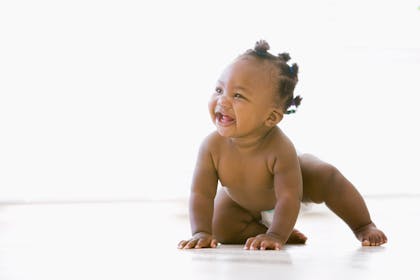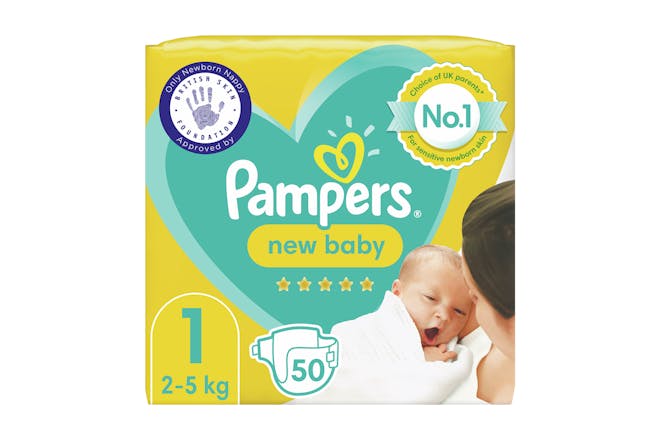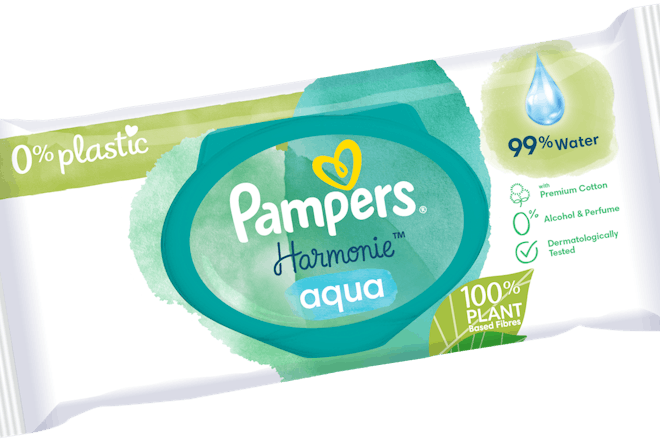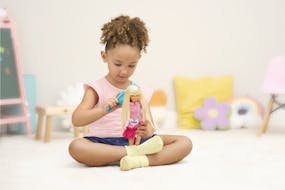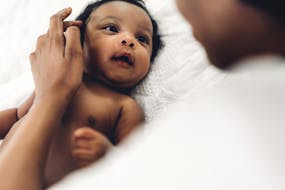How to prevent nappy rash (and how to treat it)
Advertisement Promotion
Your baby’s skin is incredibly delicate and can be easily irritated by anything from wet nappies to bubble bath. So knowing how to prevent any skin issues, including nappy rash, is important.
Knowing how to prevent and treat nappy rash is especially important as research from the Skin Health Alliance found three quarters of parents say their baby has suffered from nappy rash. With symptoms including a sore, red bottom or even blisters it can leave your baby (and you) feeling pretty miserable.
We caught up with midwife Marley Hall to get the lowdown on what causes nappy rash, how to spot it and how to treat it.
Watch Marley as she shares her expert advice in the video, below.
FREE NEWBORN NAPPIES
What causes nappy rash?
Your baby’s skin is up to 30% thinner than yours so it’s no surprise it can be easily irritated. And while you’re doing all you can to keep your baby’s bottom dry and clean, they can still develop nappy rash.
As the NHS explains, there are lots of different causes of nappy rash including:
- your baby’s skin being in contact with wee or poo for long periods;
- chafing from nappies rubbing against your baby's skin;
- nappies not being changed regularly or the nappy area not being cleaned enough;
- bubble bath, detergent or alcohol-based baby wipes;
- some medicines including antibiotics or laxatives (these are sometimes prescribed if your baby is constipated).
Marley says:
'Nappy rash is really common. It looks like a red, angry-looking rash and it can be really uncomfortable for little ones.
'There are several different things you can do to prevent nappy rash. The number one thing is making sure you choose a good nappy.'
How to prevent nappy rash
With your baby in nappies all day and night, it can be hard to stop nappy rash appearing. But there are simple things you can do to help keep it at bay.
1. Change nappies regularly
Your baby may be teeny but they get through loads of nappies. So get your changing station all kitted out as you’re going to be there a lot.
Marley says young babies need changing as many as 10 or 12 times a day on average, while older babies need to be changed at least six to eight times.
Whenever your baby does a poo you should change their nappy straight away.
2. Clean your baby’s bottom thoroughly
You’ll already be cleaning your baby during each nappy change. But if you’re after a midwife-approved technique, Marley recommends cleaning your baby’s whole nappy area using water wipes or fragrance-free baby wipes like Pampers Harmonie Aqua wipes.
Be sure to wipe from front to back and then pop on a thin layer of barrier cream.
3. Use gentle baby products
Heavily perfumed or alcohol-based products can really irritate your baby’s skin. Marley suggests sticking with plain water to wash your baby until they are around four weeks old. After that, stick to mild baby bubble baths and creams designed for baby skin.
When it comes to wipes, use alcohol-free ones like Pampers Harmonie Aqua wipes. Made from 99% pure water and zero plastic, they're gentle on your baby's skin. Plus, they're recommended by the British Skin Foundation.
4. Use the right nappies
Another simple way to help prevent nappy rash is choosing nappies that are comfy and keep any wee away from your baby’s skin.
Pampers New Baby nappies have a clever DermaComfort layer which pulls any wetness and mess away and locks it inside the nappy. They’re also the only nappies approved by the British Skin Foundation which gives them a big tick from us.
Make sure the nappy fits properly: too tight and it will irritate your baby’s skin, too loose and it won’t be able to soak up the wee properly.
How to treat nappy rash
Most cases of nappy rash are mild and you can treat them yourself at home.
If your baby isn’t upset by the rash, then simply apply a thin layer of barrier cream at the end of each nappy change.
If the rash looks sore, there are spots or blisters or the skin feels hot, talk to your midwife, health visitor or pharmacist. They can recommend a nappy rash cream to treat it.
